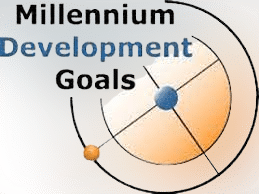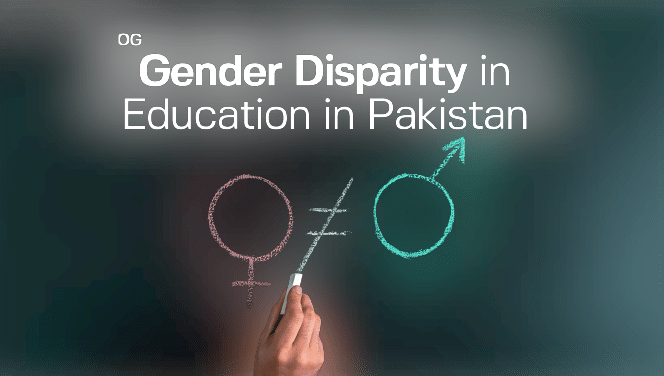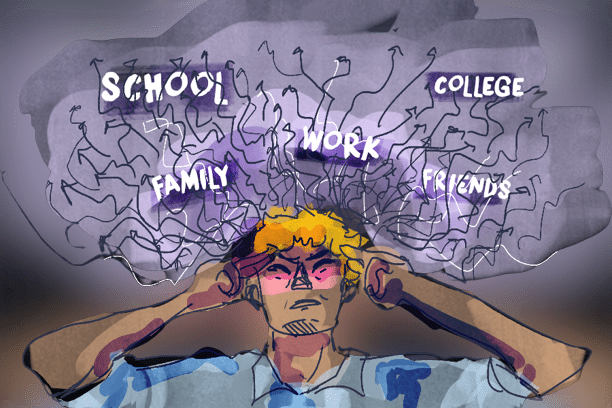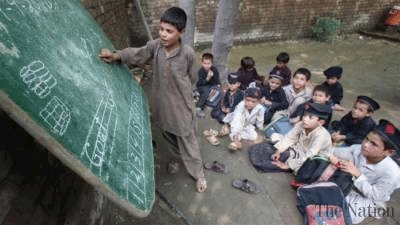Education Realities In Pakistan: Confront With Social, Cultural Forces.Part I
Pakistan has expressed its commitment to promoting education and literacy in the country through education policies at the domestic level and getting involved in international commitments on education. In this regard, national education policies are the visions that suggest strategies to increase literacy rate, capacity building, and enhance facilities in schools and educational institutes. MDGs(Millennium Development Goals) and EFA(Education For All, Dakar Declaration, Commitments) programs are global commitments of Pakistan for the promotion of literacy. The education system in Pakistan, like in many other countries, is influenced by a myriad of social and cultural factors. The vital role of education has been neglected in Pakistan which has led to low development in all fields of life.
Missing The Targets:
i. The goal 2 of MDGs is to achieve Universal Primary Education (UPE) and by 2015, children everywhere, boys and girls alike, will be able to complete a full course of primary schooling. By the year 2014, the enrolment statistics show an increase in the enrolment of students of the age of 3-16 years while the dropout rate decreased. However, the need for increasing the enrolment of students remains high to achieve the MDG target.
ii. Goal 3 of MDGs is Promoting Gender Equality and Women Empowerment. It is aimed at eliminating gender disparity in primary and secondary education levels by 2005 and in all levels of education not later than 2015. There is a stark disparity between male and female literacy rates. The national literacy rate of males was 71% while that of females was 48% in 2012-13.

Brief Overview
Pakistan’s education system has faced persistent challenges, hindering its ability to provide quality education to all. Examining the social and cultural factors at play is essential for devising strategies to improve the system.
Importance of Understanding Factors
To implement meaningful changes, we must comprehend the intricate web of influences that shape the education landscape in Pakistan.
II. Historical Context
A. Evolution of the Education System
The education system in Pakistan comprises four major levels: primary, middle, high school, and higher education. Despite progress in recent years, the system still faces several critical challenges. The roots of Pakistan’s education system can be traced back to historical developments that have left a lasting impact on its structure and accessibility.
B. Impact of Historical Events
The policymakers diverted from the two-nation theory. In the two-nation theory, the main idea was that Muslims have distinct cultures, languages, religions, education systems, and laws. In every policy, the set goals and objectives were not achieved. In place of the goals of foreign imperialism were imposed. English as a foreign language was given more importance than the mother tongue and national language. Instead of creating nationhood a class system was created and that status quo never let the nationhood.
Read Also:
From Textbooks to Real World: How Modern Education is Preparing Students for Life
III. Socio-economic Factors
Economic Disparities
Economic disparities are a critical issue affecting societies globally. In the context of Pakistan, these disparities play a significant role in shaping the educational landscape. Economic disparities in Pakistan are starkly evident in the distribution of wealth, income inequality, and access to resources. The concentration of wealth in certain segments of the population creates a significant divide that trickles down to various aspects of life, including education.
Social Class and Education
The stratification of society plays a pivotal role in determining educational opportunities for individuals. In Pakistan, social class significantly influences educational opportunities, with disparities in access to quality schooling and resources perpetuating a cycle of inequality. The stratification of society based on socioeconomic status poses challenges in achieving educational equity and fostering social mobility.

Cultural Influences
Role of Cultural Norms
Cultural norms and values deeply influence the perception of education, shaping individuals’ attitudes toward learning. Cultural norms in Pakistan wield a profound influence on education, shaping attitudes towards learning, gender roles, and the curriculum. These norms, deeply rooted in societal values, impact educational access and outcomes, necessitating a nuanced understanding to address challenges and promote inclusive learning environments.
Traditional Gender Roles
Gender roles, deeply ingrained in Pakistani society, contribute to educational disparities between males and females.In the Pakistani education system, traditional gender roles play a pivotal yet challenging role. Prevailing societal expectations often dictate distinct educational paths for males and females, influencing subject choices, career options, and overall access to educational resources. Navigating these entrenched roles is crucial for fostering a more inclusive and equitable educational landscape in Pakistan.

Government Policies
Policy Analysis
An examination of existing educational policies reveals gaps that need addressing for effective change. Government policy analysis in the context of Pakistan’s educational system unveils a dynamic landscape. Examining the efficacy of policies reveals both strides and challenges. From initiatives aimed at enhancing access to education to addressing quality concerns, the nuanced evaluation of government strategies becomes essential for fostering a robust and responsive educational framework in Pakistan.
Implementation Challenges
Despite well-intentioned policies, challenges in implementation persist, hindering their impact on the ground. The implementation of education policies in Pakistan encounters multifaceted challenges. Issues such as bureaucratic hurdles, resource constraints, and regional disparities impede the effective execution of well-intentioned policies. Inadequate infrastructure, coupled with socio-economic factors, further complicates the translation of policy into tangible educational improvements. A comprehensive understanding of these challenges is imperative for refining strategies and ensuring the successful implementation of educational reforms in Pakistan.

Language Barriers
Impact of Language Diversity
Pakistan’s linguistic diversity poses challenges in delivering education effectively, especially in regions with distinct languages. The rich language diversity in Pakistan poses both opportunities and challenges to its education system. While linguistic pluralism enriches cultural identity, it can hinder effective communication in classrooms and educational materials. Striking a balance between celebrating the linguistic heritage and promoting a unified language of instruction is essential for fostering inclusive and accessible education across diverse linguistic communities in Pakistan.
Teacher Quality
Importance of Qualified Teachers
The quality of teachers is paramount to the success of any education system, demanding a focus on teacher training and motivation. The significance of qualified teachers in Pakistan’s education system cannot be overstated. A cadre of well-trained educators not only imparts knowledge effectively but also serves as mentors, inspiring students to reach their full potential. The impact reverberates beyond the classroom, influencing societal progress and shaping the future. Recognizing and prioritizing the role of qualified teachers is paramount for fostering a robust and transformative education system in Pakistan.
Societal Expectations
Pressures on Students
Societal expectations place immense pressure on students, impacting their mental well-being and academic performance. The social impacts of pressures on students in Pakistan are substantial and multifaceted. Academic competition, societal expectations, and the pursuit of success create a high-pressure environment. This, in turn, can lead to heightened stress levels, mental health challenges, and an undue focus on rote learning. Addressing these social pressures is crucial for cultivating a more balanced and holistic approach to education in Pakistan, ensuring the well-being of students alongside academic achievement.

Cultural Disparity
The cultural disparities prevalent in Pakistan exert discernible impacts on the education system. Variances in cultural norms, practices, and values create challenges in establishing a standardized educational framework. These disparities manifest in curricular content, teaching methodologies, and educational access, thereby influencing the overall quality and inclusivity of the learning experience. Addressing these cultural disparities necessitates a nuanced approach, one that recognizes and accommodates diverse cultural perspectives to foster a more equitable and culturally sensitive educational environment in Pakistan.
Conclusion
The cultural disparities prevalent in Pakistan exert discernible impacts on the education system. Variances in cultural norms, practices, and values create challenges in establishing a standardized educational framework. These disparities manifest in curricular content, teaching methodologies, and educational access, thereby influencing the overall quality and inclusivity of the learning experience. Addressing these cultural disparities necessitates a nuanced approach, one that recognizes and accommodates diverse cultural perspectives to foster a more equitable and culturally sensitive educational environment in Pakistan.
Note: This article is in a series and the next part will be published soon.
Read Also:
What Is Machine Learning, and How Is It Impacting Education?
